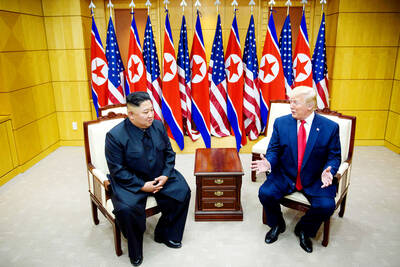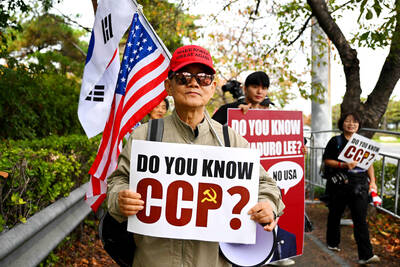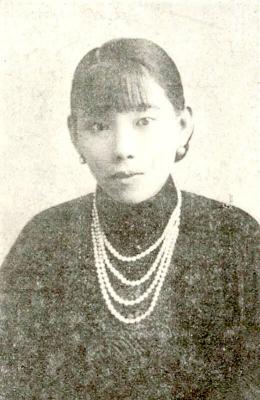The depressing numbers continue to pile up, like casualty lists after a lost battle. This week, after the government announced the 19th straight month of population decline, the Ministry of the Interior said that Taiwan is expected to lose 6.67 million workers in two waves of retirement over the next 15 years. According to the Ministry of Labor (MOL), Taiwan has a workforce of 11.6 million (as of July). The over-15 population was 20.244 million last year.
EARLY RETIREMENT
Early retirement is going to make these waves a tsunami. According to the Directorate General of Budget Accounting and Statistics (DGBAS), the labor force participation rate for individuals in the age 50-54 cohort was 78.40 percent last year, for individuals aged 55-59, it was 62.22 percent. MOL numbers from 2022 show that over two million workers between the ages of 45 and 64 are out of the work force and 95 percent of them have no intention of returning. In Japan and South Korea more of the elderly work, partly because the government offers subsidies to employers for retaining them.

Photo courtesy of the office of Chen Ming-tong
It might seem obvious to some that the retirement age must be raised, but there is no reason that people shouldn’t be able to live without working. The real issue is not that people are leaving the workforce early but that fewer workers are entering the workforce to compensate for those losses. After all, the government knows workers are exiting early. Preventing people from leaving the workforce for retirement does not address the fundamental issues of workforce shrinkage. It merely shifts the cost of Taiwan’s broken labor and demographic policies onto workers later in life, while adding no new workers to the workforce.
At the other end of life, the labor ministry also noted that for individuals aged 15-29, labor force participation was just 38 percent. According to the DGBAS employment surveys, over 1.5 million people are not in the work force because they are studying or cramming for exams. This too is fallout from the decision to eliminate the technical colleges and switch to a four-year university degree program. The technical colleges not only bred skilled workers and entrepreneurs, but put workers into the workforce more rapidly. The number of people taking a year out of productive life to study for an exam suggests that one urgently needed labor reform is reducing exams.
WOMEN’S LABOR
Another missing element in the workforce is females. A study last year observed that women’s labor force participation peaks at ages 25-29. After that it falls off, likely due to marriage and children. In South Korea and Japan it recovers at age 40, while in Taiwan it continues to decline. At age 60 workforce participation by women in South Korea and Japan is more than twice Taiwan’s 26 percent, while after 65 women almost disappear from Taiwan’s workforce. Moreover, women in Taiwan also participate much less than women in South Korea and Japan as part-time workers.
Why don’t more women work? Research shows that health issues and the need to take care of family are the most common reasons for them leaving the workforce. Women do far more housework than men, meaning they spend more hours at work. Moreover, the government does little to cater to women’s needs. Government-run childcare is lacking. Pay is low and flex time and remote work almost non-existent. Government subsidies for children are completely inadequate. A more subtle reason is that women are more likely to be doing lower paying jobs with little autonomy, a factor also encouraging exit from the labor market. By contrast, research shows that men work jobs that give them more autonomy, which offsets the impact of heavy physical labor, encouraging them to stay at work.
The Childcare Policy Alliance, a local NGO, has long advocated changes that would address these issues for women. Earlier this week the Alliance commented on a Ministry of Health and Welfare survey showing that over 45 percent of women between the ages of 15 and 24 do not want children, up from 31.9 percent in 2019. Alliance spokesman Wang Chao-ching (王兆慶) was quoted as saying that women are “burning the candle at both ends,” leading to a “low fertility trap.” Wang called on the government to encourage more men to take parental leave (only 5 percent in Taiwan do, the Alliance said), instancing Japan, which has set a goal of getting 85 percent of men to take parental leave by 2030.
Clearly helping women raise children by getting fathers involved and providing more flexible work spaces and child care would not only raise the birth rate but get more women back in the work force where they want to be and where they are needed, addressing two of Taiwan’s most urgent problems. But that is insufficient.
LOW WAGES
A recent study cites DGBAS statistics showing that the proportion of workers earning less than the average monthly salary is rising, reaching 68.6 percent in 2022. The incremental growth in the minimum wage has not helped many workers. Taiwanese, especially those under 50, even those with good-paying jobs, feel like they are struggling more each year, as in fact, they are.
Research shows that the labor share of income in Taiwan is much lower than the capital share (if Taiwan creates US$100 in value, its labor takes home less than half), a phenomenon that is widespread across countries in the global marketplace, especially wealthy nations. For example, a recent study by Tanadej Vechsuruck of the University of Rhode Island looking at a dataset of 81 countries from 1950-2019 found declines in the labor share of income in 58 of them.
An article published last year in CommonWealth magazine observed that Taiwan in the early 1990s, employee compensation accounted for half of GDP, noting that “by 2021, however, employee compensation had dropped to a historical low of 43 percent, while corporate profits had reached 37 percent.”
PLUMMETING BIRTH RATES
It is not a coincidence that global birth rates are plummeting as the cost of children rises both absolutely and more importantly, relative to incomes. Nothing will change until those basic economic facts change.
Not only do women who drop out of the workforce for children give up income and career advancement, they experience reduced pension accumulation as well. A wise government might consider paying a large lump sum into the retirement accounts of women for every child beginning with the second one. Since the government has already indicated it is willing to pay subsidies for children, the only question is how much and when. The current morass of subsidies doesn’t work, as evidenced by the continued slide in birth rates and the rising unwillingness of young women to have children. The lifetime cost, not just the initial costs, of children must be defrayed.
What would the budget for lump sum retirement funds look like? Assume we tripled the current birth rate to 270,000 children annually. Assume further that two-thirds of those were second or more children. If we gave NT$1.5 million for each second and above child, the total budget is NT$270 billion, roughly US$9 billion. That is a pittance in a US$750 billion economy, spending well justified by the national security returns alone.
Or we could just fling stop-gap subsidies at the problem, and watch Taiwan disappear.
Notes from Central Taiwan is a column written by long-term resident Michael Turton, who provides incisive commentary informed by three decades of living in and writing about his adoptive country. The views expressed here are his own.

Many people noticed the flood of pro-China propaganda across a number of venues in recent weeks that looks like a coordinated assault on US Taiwan policy. It does look like an effort intended to influence the US before the meeting between US President Donald Trump and Chinese dictator Xi Jinping (習近平) over the weekend. Jennifer Kavanagh’s piece in the New York Times in September appears to be the opening strike of the current campaign. She followed up last week in the Lowy Interpreter, blaming the US for causing the PRC to escalate in the Philippines and Taiwan, saying that as

US President Donald Trump may have hoped for an impromptu talk with his old friend Kim Jong-un during a recent trip to Asia, but analysts say the increasingly emboldened North Korean despot had few good reasons to join the photo-op. Trump sent repeated overtures to Kim during his barnstorming tour of Asia, saying he was “100 percent” open to a meeting and even bucking decades of US policy by conceding that North Korea was “sort of a nuclear power.” But Pyongyang kept mum on the invitation, instead firing off missiles and sending its foreign minister to Russia and Belarus, with whom it

The Chinese Communist Party (CCP) has a dystopian, radical and dangerous conception of itself. Few are aware of this very fundamental difference between how they view power and how the rest of the world does. Even those of us who have lived in China sometimes fall back into the trap of viewing it through the lens of the power relationships common throughout the rest of the world, instead of understanding the CCP as it conceives of itself. Broadly speaking, the concepts of the people, race, culture, civilization, nation, government and religion are separate, though often overlapping and intertwined. A government

Nov. 3 to Nov. 9 In 1925, 18-year-old Huang Chin-chuan (黃金川) penned the following words: “When will the day of women’s equal rights arrive, so that my talents won’t drift away in the eastern stream?” These were the closing lines to her poem “Female Student” (女學生), which expressed her unwillingness to be confined to traditional female roles and her desire to study and explore the world. Born to a wealthy family on Nov. 5, 1907, Huang was able to study in Japan — a rare privilege for women in her time — and even made a name for herself in the